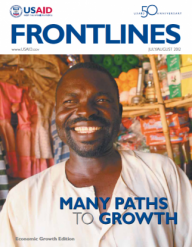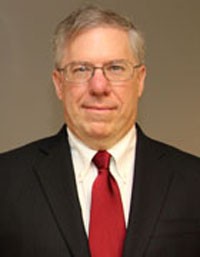USAID has long recognized the importance of economic growth to development. It is the ultimate path to graduation from dependency—once countries have grown enough to pay for their own development, they don’t need our help.
Economic growth obviously happens via the private sector—whether that means established companies, microbusinesses such as tailors and translators, vendors in the informal markets, farmers, or service providers like restaurateurs and dentists. The role of donors is to help businesses find new markets, reduce their costs and risks, and increase revenue potential. There are four main areas in which donors can do this, and in this regard USAID has made extensive contributions—but significant work remains in some developing countries.
Enabling Environment
The first area is to create an environment where government rules and business possibilities intersect. That includes everything from ensuring that banks operate on sound financial footing, keeping food supplies safe, and helping property owners gain clear titles to their land and buildings. We promote transparent and rules-based economies so that the private sector is free to do what it does best—produce the goods and services that make countries grow.
Our role is to promote “smart” regulation, not simply to create or reduce regulation. Smart regulation is grounded in evidence. It allocates scarce government enforcement resources to areas where there is greatest risk of possible harm to the population, and includes the active participation of the regulated parties. Proper regulation is a cornerstone of good governance. At USAID, we have decades of on-the-ground experience advising government reformers on the full range of rules.
But we know that regulations are not the only story. After the Berlin Wall came down, USAID began helping former command economies to adapt to competitive free-market systems of global trade. This required an overhaul of the commercial legal framework. USAID helped local reformers change the laws of commerce in at least 15 Central and Eastern European countries. We worked on arbitration in Croatia, bankruptcy in Serbia, commercial courts in Romania, secured lending in Bosnia, and tax, customs, licensing and financial reform in Georgia. Today, many of our aid graduates are either members or candidates for membership in the European Community.
We’ve helped 28 countries join the World Trade Organization. In a number of countries, USAID projects helped improve border processes. For example, in Jordan, we worked with the Department of Customs to cut clearance times by more than half—to less than 24 hours—through improved trade facilitation.
Besides working on commercial trade, in the 1990s, we worked to improve another sort of trade—securities trading. USAID supported dozens of projects helping reform-minded governments to modernize their securities regulations and develop their stock markets. Across four continents, billions of dollars of investment and trading is occurring via stock exchanges built or improved with USAID funding, providing an important source of financing for local businesses.
And, of course, donors are not the source of all knowledge for these reforms. We work best when we help to reknit the fabric of society—especially in conflict-affected states—by bringing the public and private sectors into constructive dialogue. That’s why we work with the Center for International Private Enterprise (CIPE), an off-shoot of the U.S. Chamber of Commerce, to promote business organizations to advocate reforms. CIPE has worked with hundreds of associations and their governments to increase participation and inclusion of the private sector in policy, law and implementation.
Infrastructure
The second broad category critical to economic growth is infrastructure. Good roads, reliable power, clean and sufficient water, fast Internet and plentiful communications are all vital to growing businesses. In fact, when the economists analyze economies to determine the “binding constraints to growth”—the roadblocks—they have found infrastructure to be the number one problem across the various countries studied.
USAID used to do a large amount of infrastructure work. In the 1960s and 1970s, large numbers of dams and roads were built with USAID assistance. Since then, the World Bank and other regional development banks have taken over that role. These days, USAID is still spending about $1 billion a year on infrastructure but most of that work is focused on post-conflict or post-crisis countries such as Afghanistan, Haiti, Pakistan, Liberia and Iraq. In these situations, the Agency helps to rebuild key facilities, such as water supply and power systems, that are critical to economic recovery and growth. USAID also focuses on ensuring that energy investments are sustainable by helping countries strengthen and create viable local institutions to manage energy infrastructure.
Technology
Developing or spurring the expansion of new technologies is another critical area of donor engagement. The classic example is USAID funding the Green Revolution back in the 1960s. We had moved away from that line of work for many years, but are now—with the accelerating pace of global technological developments—finding our way back.
In this new millennium, we have created Development Innovation Ventures (DIV) grants to find and support breakthrough solutions to the world’s most important development challenges—interventions with the power to change millions of lives at a fraction of the usual cost. Akin to a venture capital approach to funding promising new technology, DIV invests in these game-changing technologies, rigorously tests them using cutting-edge analytical methods, and scales solutions that prove successful.
USAID is also defining Grand Challenges for Development to focus global attention on specific development outcomes based on transformational, scalable and sustainable change. Grand Challenges seeks to remove critical barriers to development progress and foster innovative approaches, particularly those based in science and technology. With both our Grand Challenges and DIV, USAID is undertaking an approach to development that we believe will inspire foundations, corporations and individuals to engage in solving these challenges.
Lastly, whereas USAID helped create or improve hundreds of banks during its first 50 years of existence, it is now working to create a virtual bank branch for every citizen of the world. Mobile money (mMoney)—using cell phones to conduct financial transactions—is transforming finance in the 21st century. In a world where there are 8,000 times more cell phones than bank branches (4 billion phones versus 500,000 bank branches), mMoney can exponentially increase access to financial services. mMoney approaches help root out corruption by eliminating middlemen to financial transactions and by taking poor peoples’ financial transactions out of alleyways and into the formalized financial system.
Risk Sharing
The fourth and final area where we put our focus is in risk sharing. In developing countries, many sound business investments do not take place due to perceived high risk. As a result, jobs are not created and income opportunities are lost. USAID works with the private sector to reduce risks through several mechanisms.
USAID’s Development Credit Authority (DCA) provides a partial guarantee when a bank extends a loan to a viable local business. A DCA guarantee reduces the risks faced by local financial institutions and unlocks financing that helps businesses to grow. Whether it’s getting working capital to promising entrepreneurs or input financing to small farmers, DCA seeks to prove the commercial viability of lending to local entrepreneurs so that lending and investment continues long after we exit.
The Global Development Alliance (GDA) is an innovative public-private partnership model for improving economic and social conditions in developing countries. Under this model, USAID provides grants in combination with the assets and experience of strategic partners. Working with multinational corporations, and regional and local companies, USAID builds public-private partnerships that can have significant and sustainable impact on major development challenges while reducing the risks faced by our private-sector partners.
USAID works with the private sector through cooperation with the U.S. Overseas Private Investment Corporation (OPIC). OPIC achieves its mission by providing investors with financing, guarantees, political risk insurance and support for private equity investment funds. In some cases, USAID provides technical assistance alongside the OPIC financings, thereby enabling worthy private-sector transactions to proceed.
Adding It Up
All of these endeavors have helped create the conditions necessary for private companies to grow in many countries.
Adoption of such policies helped Thailand increase real per capita incomes by 5.5 percent per year between 1965 and 1995—quintupling average incomes in three decades. Botswana grew even faster, with 7.2 percent annual growth in per capita incomes over the same period, resulting in an eight-fold increase in the average incomes of its citizens. These achievements allowed Thailand and Botswana to graduate from USAID assistance—along with other successful countries like Costa Rica and the Czech Republic.
And as these countries grow, it helps our own economy grow. In USAID’s 21 largest recipient countries, the number of people living in extreme poverty fell by more than 136 million between 1993 and 2008. These income improvements are creating markets for U.S. goods and services, and jobs for U.S. workers. Today, developing countries buy roughly half of all U.S. exports.
In 1954, USAID’s Food for Peace program brought flour to Taiwan and taught people how to bake. Today, the country is our sixth largest agricultural market and the United States is Taiwan’s largest supplier of wheat and corn. Our entire history of development aid to Taiwan cost the American taxpayer about $1.4 billion between 1949 and 1963—or about $100 million a year. Taiwanese tourists now spend over $1 billion every year traveling to the United States.
In this issue of FrontLines you will read about some of the innovative economic projects that USAID is undertaking with its partners to ensure that more growth occurs, more countries graduate from assistance, and more markets are created for American companies.










Comment
Make a general inquiry or suggest an improvement.